Innovation as a Leading Manufacturing Company in Canada

Innovation in advanced manufacturing makes profits possible while employing Canadian workers. It is through open collaboration and knowledge sharing that Canadian companies will be able to manufacture domestically made products, using advanced technology. Here is an alternative business model that breaks the cycle of unethical exploitation of overseas workers.
by Nicolas Sacchetti
It is more than likely that very small advanced manufacturing companies have developed a new product or service in the last five years. This makes them the most innovative compared to SMEs and large companies.
Very small firms are defined by having fewer than 10 employees. They represent almost half of Canada's high-tech manufacturing companies.
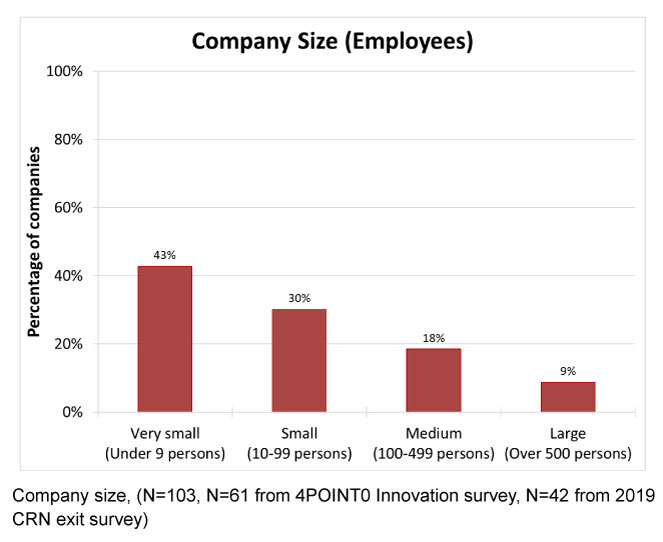
4POINTO Innovation survey
Shayan Fahimi is part of a research team consisting of Janna Fabris, Anoush Poursartip and Elicia Maine. It surveyed advanced manufacturing firms in the composition of their intellectual property portfolio, the government support they receive, and their collaborative culture that enables innovation within their company.
Fahimi is a PhD candidate at the Composites Research Network at the University of British Columbia. On October 18, 2021, he presented the results of two surveys on innovation strategies inherent to intellectual property in advanced manufacturing.
The webinar was a co-presentation of Composites Knowledge Network (CKN) and the Partnership for the Organisation of Innovation and New Technologies (4POINT0), as part of the Anchor 4POINT0 series.
Manufacturing industries employ about 10% of the Canadian workforce and generate half of the private sector's research and development activity. Innovation is essential to maintaining quality jobs in Canada and to ensuring Canadians' self-sufficiency necessities.
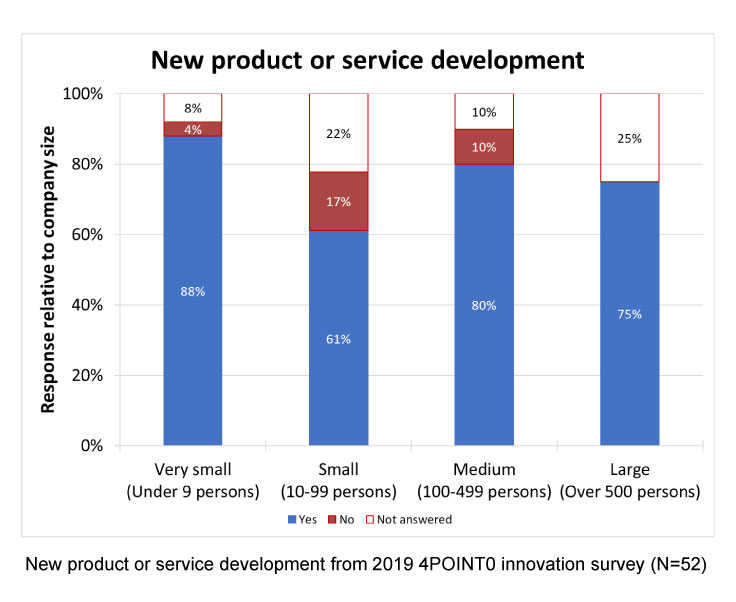
4POINTO Innovation survey
"Over 43% of the companies in our survey have fewer than 20 employees. These are the most likely to have developed a new product or service in the last five years." - Shayan Fahimi
Innovation Strategies
Designing innovation-oriented governance techniques at the core of the company is the first strategy Fahimi mentions. He also emphasizes the importance of operating in an innovation ecosystem that fosters cooperation between academia and companies, from the very small (1-10 employees) to the large.
The results of the study show that a portfolio with a large inventory of intellectual property is seen as a driver of innovation by SMEs in the advanced manufacturing sector.
However, they need to address the issue of protecting intellectual property, through protection mechanisms such as patents, in order to make collaborative innovation between firms possible. On average, 57% of the companies surveyed report keeping a trade secret to protect their innovation, compared to 45% who report using patents.
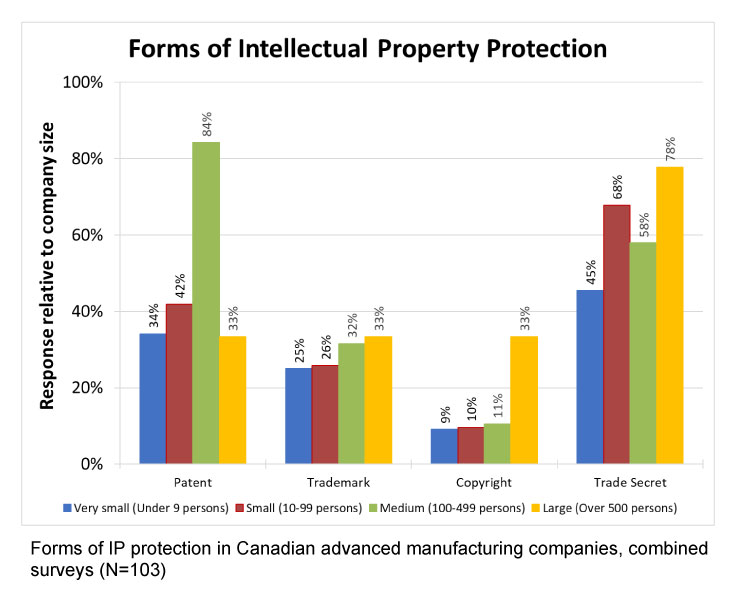
4POINTO Innovation survey
Types of Intellectual Property Used
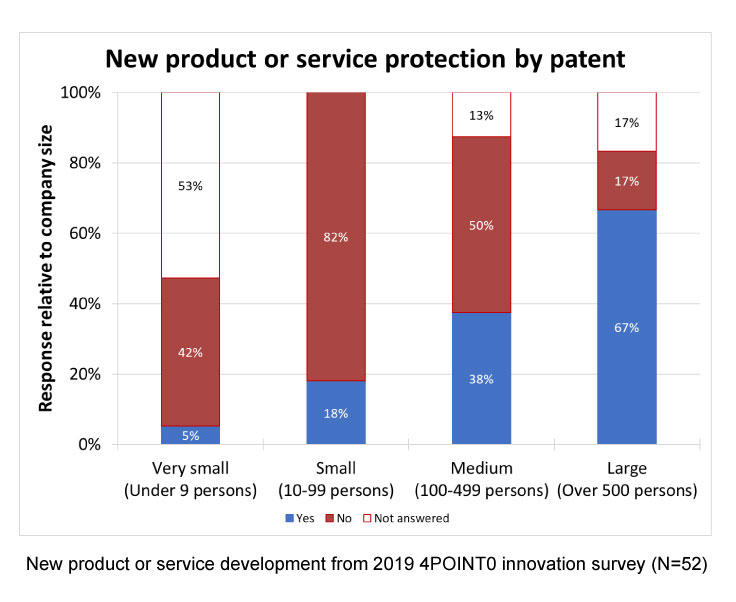
4POINTO Innovation survey
"Small and very small companies are less motivated to apply any method of intellectual property protection," Fahimi said. The survey found that among companies that have launched new products or services in the past five years, 67% of large companies protect their innovation with patents, compared to 5% of very small companies.
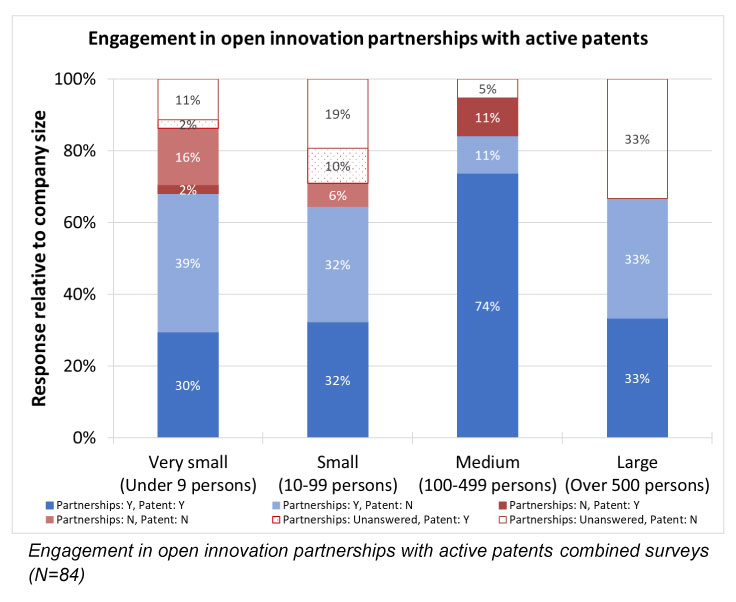
4POINTO Innovation survey
"While this indicates a huge gap between the ability and willingness of large and small companies to use patents, it is not clear that the new products or services developed by these small companies meet the eligibility criteria," he says. The survey also shows that not all very small companies are convinced that patents sufficiently protect their innovation.
The open innovation partnership can help overcome technological and business uncertainty, a major barrier to innovation. Its constructive link with legal methods of intellectual property protection can be exploited. Once intellectual property is established, collaboration is facilitated.
Barriers to Innovation
Prolonged market uncertainty and economic risk are the main barriers to innovation according to the authors. Regulations, research agreements with external collaborators and government policies are also important.
The majority of small and very small firms reported that the application process for funds is a problem in accessing government support. Lack of awareness of these programs was also an issue raised in the study.
The authors of the study were surprised to find that intellectual property protection is one of the least encountered barriers to innovation by the companies surveyed.
It should be taken into consideration that obtaining a patent is a long and slow process whose cost increases rapidly and exceeds $10,000 depending on the geographical scope of the patent. In addition to the maintenance costs which start at $2,000 in the U.S., and all related fees.
Innovation Enablers
A developed capital market for advanced manufacturing would be welcome, according to stakeholders. In addition, Canada does not offer companies a non-dilutive financing option. This type of financing allows the company not to lose any equity, and not to give up any property.
According to the study, raising awareness of intellectual property, reducing the cost of obtaining and enforcing intellectual property rights for SMEs, and improving the commercial value of patents are all active policies suggested to encourage the use of intellectual property.
Doing Better
At the end of his speech, Shayan Fahimi opens up to the future: "While there is no single solution to solve the lack of interest and capacity of small businesses to file for patents, it is possible to support them by planning and developing innovation subsidies that make the cost of patents affordable. Further studies are needed to examine the reason for very small firms' interest in trade secrets, and the role of innovation policies in supporting trade secret while promoting open innovation practices. »
Graphs are from Is innovation in advanced manufacturing different? by Fahimi, Fabris, Poursatip and Maine.
This content has been updated on 2022-05-19 at 12 h 39 min.